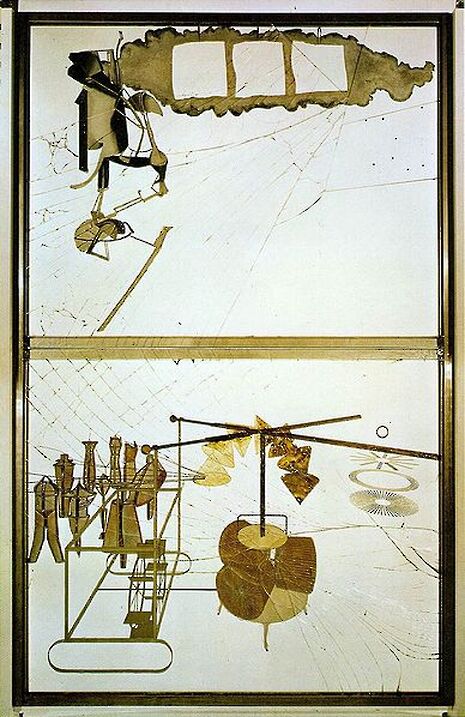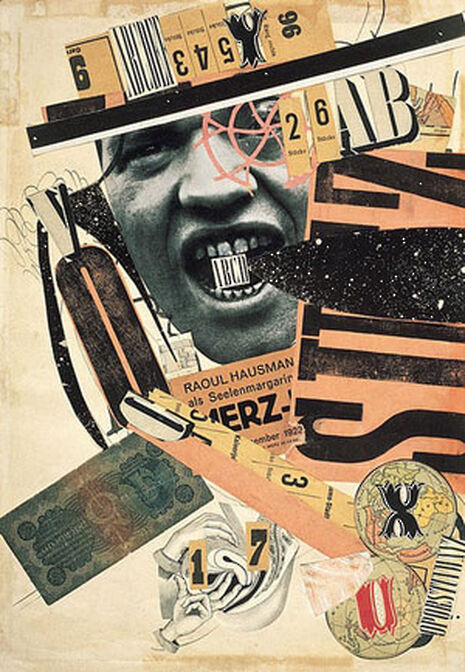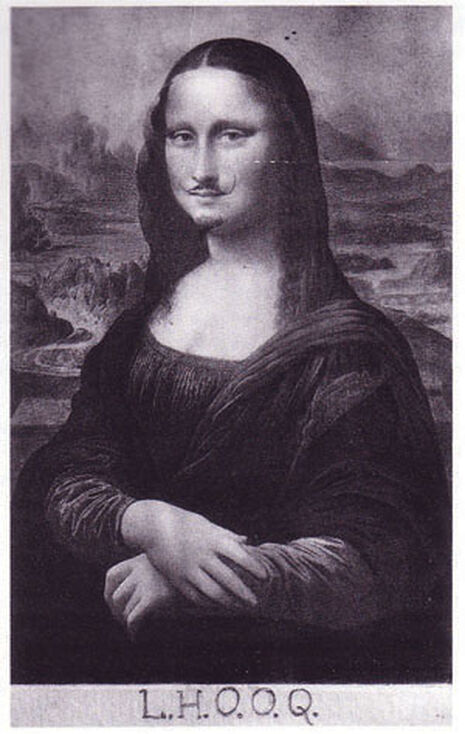Art Movements for the Non-Arts Student: Dada
So Futurism looked to the future. Cubists liked cubes. What about the Dadaists?

Dada was once branded as “anti-art”. I know what you are thinking – how does an art movement rebel against art?
What this means is that they were generally in opposition to everything art stood for. They ignored aesthetics. They affronted sensibilities. In all, their thoughts concerning traditional culture were also thoughts of destruction.
It was said by the American Art News that their philosophy was “the sickest, most paralyzing and most destructive thing that has ever originated from the brain of man." The artists themselves called it "a phenomenon bursting forth in the midst of the post-war economic and moral crisis, a saviour, a monster, which would lay waste to everything in its path. [It was] a systematic work of destruction and demoralization... In the end it became nothing but an act of sacrilege."

So what does the term “Dada” actually mean? The name was apparently found by opening a dictionary at random, and is the French for “hobby-horse”. Some might call it symbolic, standing for the presence of the absurd and the role of chance in their art work, like in the compositions of Jean Arp, who created a piece by dropping scraps of paper onto cardboard, before turning them over and sticking them down where they landed.
Dadaism initially emerged in Zurich on 8 February 1916 with its name appearing that year for the first time in the pamphlet Cabaret Voltaire. It materialised in Paris, New York, Cologne, Berlin and Hanover during its lifetime, peaking between 1916 and 1922 before officially vanishing in 1924.

It was a protest movement formed in the heat of the First World War, remonstrating against bourgeois nationalist and colonialist values which many of the artists believed caused the war. They hated conformity in both art and society, rejecting standards and ridiculing the conformists of a modern world that they saw as lacking direction and meaning.
They painted, they wrote, they composed, they gathered publicly, demonstrated, and published their media, all as part of their Dadaist protest. Their world was being torn apart by war, and they had to fight back with their violence, their humour, their scandal and derision. Art was being exploited as a means of deception, and so they rebelled with their own form of expression. They rejected the “logic” that they labelled bourgeois and instead followed a path into illogical chaos.
For the Dadaists, it wasn’t just about the oil painting. Photographs, newspaper cuttings, wood, cloth, wool and sand were joined together to form a rebellious and sometimes temporary and perishable art-form, bringing together painting and sculpture to meet in the middle to confuse the rules of classification. “Merz” became a type of collage constructed from objects found in the street, whilst assemblages were the three dimensional versions, held together by nails and screws. They used the photomontage (pieces made by gluing photographic media images together) to present their views of the increasingly media-shaped world.
Example artists from the house of Dada were Francis Picabia, Raoul Hausmann, Marcel Duchamp and Kurt Schwitters, for starters.
So, in traditional Blue Peter style, let’s all sit down and make a collage. And if we make it out of what we find in the street, we might just be the new Dada. Who knows?
 News / Uni members slam ‘totalitarian’ recommendation to stop vet course 15 January 2026
News / Uni members slam ‘totalitarian’ recommendation to stop vet course 15 January 2026 Science / Why smart students keep failing to quit smoking15 January 2026
Science / Why smart students keep failing to quit smoking15 January 2026 Comment / Will the town and gown divide ever truly be resolved?12 January 2026
Comment / Will the town and gown divide ever truly be resolved?12 January 2026 Interviews / The Cambridge Cupid: what’s the secret to a great date?14 January 2026
Interviews / The Cambridge Cupid: what’s the secret to a great date?14 January 2026 Features / How sweet is the en-suite deal?13 January 2026
Features / How sweet is the en-suite deal?13 January 2026









